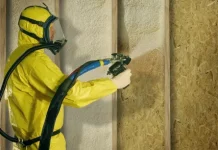Table of Contents
Introduction
Leather is a beneficial and flexible material for humankind. But what is the process of leather? So then,how are we making leather products? We are using leather for any purposes, including footwear, automobile seats, fashion accessories, many furniture, clothing, etc. However, the processing of leather has many steps to create a product.However, this leather industry includes big factories to process leather. Leather is a beneficial material for our daily lives. For this, we are here with a guide called “ Leatherworking Guide Classic.”
Leatherworking Guide Classic
By the way, leatherworking is not new in this world. It is an ancient and traditional work. The leather industry is one of the biggest industries in this world. Also, this is enormous and lengthy in process.
Leather Source
Usually, we collect leather from a
nimals. Moreover, we collect leather from many different animals like cow, goat, sheep, pigs, buffalo, crocodile’s skin. That’s why most of the leather is from animals. But nowadays some artificial leather is invented. They look like leather but not original leather. Generally, animal leather comes 43% from cows,15% from sheep,11% from pigs,10% from buffalo, 9% from goats, 3% from crocodiles, and 2% from other animals. For the most part, you can find these pieces of information quickly in any kind of leatherworking guide classic.
Most of the animal leather we collect from cows. Also, crocodile skin leather is very expensive and rare because collecting crocodiles is very difficult and hard-working. As a result, the price range of crocodile leather is very high.
Many countries process leather for a different purpose. But for instance, the most renowned countries are China, Italy, India, Brazil, Korea, Russia. Furthermore, they are the most reputed country for the production of leather. However, China produces 80% of leather. Italy also produced many percentages of leather products. Chinese leather companies are reputed all over the world for their product. Italy’s many shoes and leather processing companies contribute to their national economy.
Consequently, Many of the shoe companies in Italy are very popular all over the world. “Lotto” is a trendy brand across the globe. Italy is the origin of this brand.
Furthermore, artificial leather is one of the sumptuous leather nowadays. This material produces many products. However, it looks like original animal leather. It’s not unique, but also it has many uses. Therefore, the raw materials manufacture all leather products. But it’s a replica of the original.
Types of leather
There are many types of leather in our world. Every kind of product of their characteristic properties. Accordingly, how can you get to know about these quickly? In short, you can use a leatherworking guide classic, which will help you. Hence, the classes are below.
- Top grain: In the first place, we have Top Grain leather. Full grain is the best quality of leather. Generally, it is collected from animals such as cows, sheep, buffalo, etc. & contains good quality leather and manufactures many leather products. Typically, many garment items, upholstery products, shoes, and relevant products are made rings by this type of leather.
- Corrected grain: Next, we have the corrected-grain is one of the good quality leather. Regularly, we use those kinds of leather products. Most of the products are manufactured by corrected grain. Shoes, handbags, embossed with creative paint leather, are the manufacturer with this type of leather.
- Split sued: Also, we have Split leather. It is another type of leather. These types of leather manufacture many kinds of products. Such as lower-cost leather furniture, more undergarments products, are manufacturers with this type of leather.
- Nubuck suede grain: Later, we have Nubuck suede grain, one of the best leather nowadays. This type of leather manufacture may contain products.
That type of leather manufactures garments, upholstery products, leather furniture, and many products. This type makes all the leather products of leather. So it’s called “Genuine Leather.”
- Fiber leather: Lastly, the Fibre leather. Fiber leather is one kind of artificial leather. It’s 51% of fiber. But it looks genuine leather. This type of leather manufactures low priced garments, such as upholstery products, furniture, etc.
Processing of leatherworking guide classic
Generally, leather processing in companies is a pretty much-complicated process. Usually, it has three subprocesses. Such as,
- Preparatory Stages
- Tanning
- Crusting
Preparatory Stages
In the primary stages, they prepare leather for tanning. During this stage, removed skin components which are unwanted for work. Generally, irradiated for other steps. The preparatory stage divided many subprocesses. How will you know about these? Later, you will get to know about these from any kind of leatherworking guide classic.
- Preservation: It is the first process to produce leather. Maintenance is the process of removing skin wastes that are temporally imputrescible.
- Soaking: Soaking is another step to remove leather waste.
- Liming: Liming is the process of removing unwanted protein.
- Unhairing: Unhairing is the process of removing almost full hair and other hair waste.
- Fleshing: Fleshing is the process of removing much unwanted subcutaneous material.
- Splitting: Splitting the process of cutting skin two or three-layer in horizontal.
- Relining: Relining is the process of removing unwanted protein.
- Deming: Later, we have Deming. It is the process of adding some chemical substances to liming and unhairing leather. It’s a very long process.
- Bating: Bating is the process of removing protein again. This step removed proteolytic proteins and other rear protein.
- Degreasing: Degreasing is the process of stripped oil and other relevant substances.
- Bleaching: Bleaching is the process of chemical modifications of dark pigments to lighter colored pelt.
- Pickling: Pickling is helping to tan reagents like chromium, aldehydic, and other tanning reagents.
- Depickling: Finally, depickling is the last process of preparatory stages. It helps the penetration of specific tanning agents.
Tanning
Earlier we saw the first step.Next, we have Tanning. This process is to convert the protein of raw skin into a solid material. The main difference between fresh skin and tanned hides (skin) is tanned hides is that coarse coats dry out to form a hard, inflexible material that can decompose when re-wetted.
The most used tanning material is chromium—90% of tanning work by this type of reagent. If once tanned, a pale blue color has occurred, which is called “wet blue.”In the process, the pH balance is 2.8-3.2. It’s one of the ineffective methods. By the way, you will find all the ways in the leatherworking guide classic.
Crusting
Lastly, we have crusting. After tanning has proceeded, the skin looks thin, while adding some reagent like a lubricant. The crusting operation occurred in many steps. All the process is step by step. Suppose, they mistook one step. As a result, they need to do the whole process again.
-
- Wetting back: To begin with wetting back. Wetting back means rehydrating the semi-processed leather.
- Sammy: Sammy is the process of water pressed and kicks out from the skin. They remove 45-50% of the water out of this process.
- Spitting: Splitting means leather split two or three horizontal parts.
- Shaving: Shaving is the leather thinned process. Suppose anyone wanted to press leather and make thin. Then go to the shaving process.
- Neutralization: Neutralization is the process of increasing or decreasing pH value.
- Retaining: Retaining is the process of tanning again, and they add additional tanning reagents in this step.
- Dyeing: Dyeing means colored leather
- Fatliquoring: Next, fatliquoring is the process of fat oil, and they fix the other relevant products once placed.
- Filling means that many hard chemicals are added in the step because leather makes it harder and more cumbersome.
- Stuffing: Later, it is stuffing. Stuffing is the process of adding fat oil, and wax to the fiber.
- Stripping: Stripping is the process of removing many cling tanning products.
- Whitening: Next, whitening is the process of coloring the product and making it very bright.
- Setting: The setting is the portions of removing execs water, grain, divided into many steps.
- Fixation: Fixation removes chemical bond from leather.
- Softening: Softening means separating the leather fiber from main skin leather.
- Buffing: Lastly, buffing is the process of abrasion in the leather surface because of reducing nap and grain defects.
Finally, we get the product in hand.
Tanning Method of leatherworking guide classic
Ordinarily, tanning is one of the essential processes in the production of leather. For the most part, tanning processes differ in which chemicals are in the tanning liquor. Generally, five types of tanning methods exist in leather production. What are these in brief, let’s find out.
-
- Vegetable-tanned leather: In the first place we have this. Vegetable-tanned leather extract vegetable matter from the leather. It is the very oldest model.
- Leather tanned with chromium: Next is the leather processing, that is chrome-tanned is a prevalent leather tanning model. In 1858 it was invented. Tanning using corium sulfate and sodium salts. 90% leather tanning is of this method.
- Leather, which is aldehyde tanned: Aldehyde-tanned, is a tanning process. This process uses glutaraldehyde or oxazolidine reagent compounds. In the past Formaldehyde was used in this process.
- Brain tanned: Later, it is Brain tanned leather refers to the labor-intensive process. In this process, they use emulsified oils. Subsequently, they also use animal brains, such as cattle, buffalo, dear, etc in addition.
- Alum tanned: Lastly, we have Alum leather is the process using aluminum salt mixed with various binders and protein sources, such as flour and egg yolk.
Thus, we got the finishing on leathers. Particularly, this process is one of the most important steps.
The difference between the tanning method
- One bath method
- Two bath method
- Finishing
Leather Product – leatherworking guide classic
Nowadays 100+ leather manufacturing companies are making 1000+ different leather products. Subsequently, there are some leather products below. However, let’s find out from a leatherworking guide classic.
To begin with these products. Namely,
- Body item
- Garment
- Shoes
- Jackets
- Belt’s
- Bracelet
- Hats
- Boots
- Gloves
- Cap
Containers item
- Key case
- Glasses pouch case
- Cardholder
- Wallet (Money bag)
- Check bookcase
- Phone, Tablets and gadget case
- Laptop case
- Manicure set case
- Pencil case
Home and office item
- Sofa
- Footrest
- Chair Backs
- Armrest
In addition to this, there are many more sectors of leather products. Such as,
Sports and leather item
- Sport ball
- Sports footwear
- Sports garment
- Skin guard
- Sport gloves
- Baseball gloves
- Cricket gloves
- Cricket ball
Defense And Army item
- Boots
- Knife sheathe
- Holsters
- Belts
Travel item
- Car seat cover
- Neck pillows
- Saddlery
Music and Entertainment Item
- Drums
- Musical instrument bag/holders
Above all, we can say almost every kind of product can be of leather. As a result, any leather lover can enjoy these.
leatherworking guide classic manufacturing company
Earlier, we got to know about the products. Here, we have 100+ companies manufacturing leather products. Much repeated world-famous companies like Nike, Adidas, Gucci, etc. are there. They were making many types of leather products and satisfied their customers. So then, the top-selling companies are,
- Gucci
- Guens
- Fendi
- Bata
- Nike
- Adidas
- Moncler
- Armani
- Schott Nyc
Countrywise best selling brand
India
- Bata
- Merida Group
- Bharti group
- Lakhani Arman
- Mayer Uniquotes
- Metro Brand
- Superhouse Ltd
China
- H.S.A Global
- Lishui Chizhoueats Lmt
- Shaoxing will mark co Lmt.
Above all, the reputed brands provide excellent quality of products. As like, Nike is the top-selling brand for the last three decades. Many putative e-commerce sites provide original quality products. Amazon is one of them. By the way, they offer a unique variety of products.
Moreover, Aliexpress is another chinese trusted e-commerce company in the world. They provide the best quality of products. Top-selling brands always try to serve the right quality products because they can’t destroy their reputation. So always try to buy from a reputed company or shop. Other than that, you can follow a leatherworking guide classic for your ease.
FAQ of leatherworking guide classic
- Why would I use a leather product?
- Leather is a useful material. It’s also a long-lasting product. If you like to use a product for a long time, definitely you should choose leather. In comparison, leather products are more reliable.
- Is a leather product suitable for me?
- Yes. You can take it blindly because all over the world people were using it and satisfied with leather.
- Which type of products are right for me?
- Every type of product is excellent, but Top grain is the best quality of products.
- Where do I collect the best quality products?
- You can buy a reputed brand or reputed shop. You can buy from amazon for excellent quality. Otherwise, the product may not be the best.
- Is the leatherworking guide classic helpful?
- Yes, any kind of leatherworking guide classic is helpful.
Conclusion of leatherworking guide classic
In summary, we can say leather products are top-rated all over the world. Because leather produced the right quality products, and it’s lasting many years. Almost every personal product for our daily life is of leather. However, the processing of leather is such tight and hard work. Lower-class workers do work for higher class people. Obviously, we must respect our lower-class workers because if they do not work for ours, we can’t live a better way. Compared with other products, the leathers remain always in a higher position. So then, for your ease and knowledge, we are here with the Leatherworking Guide Classic – The ultimate leatherworking Guide.








